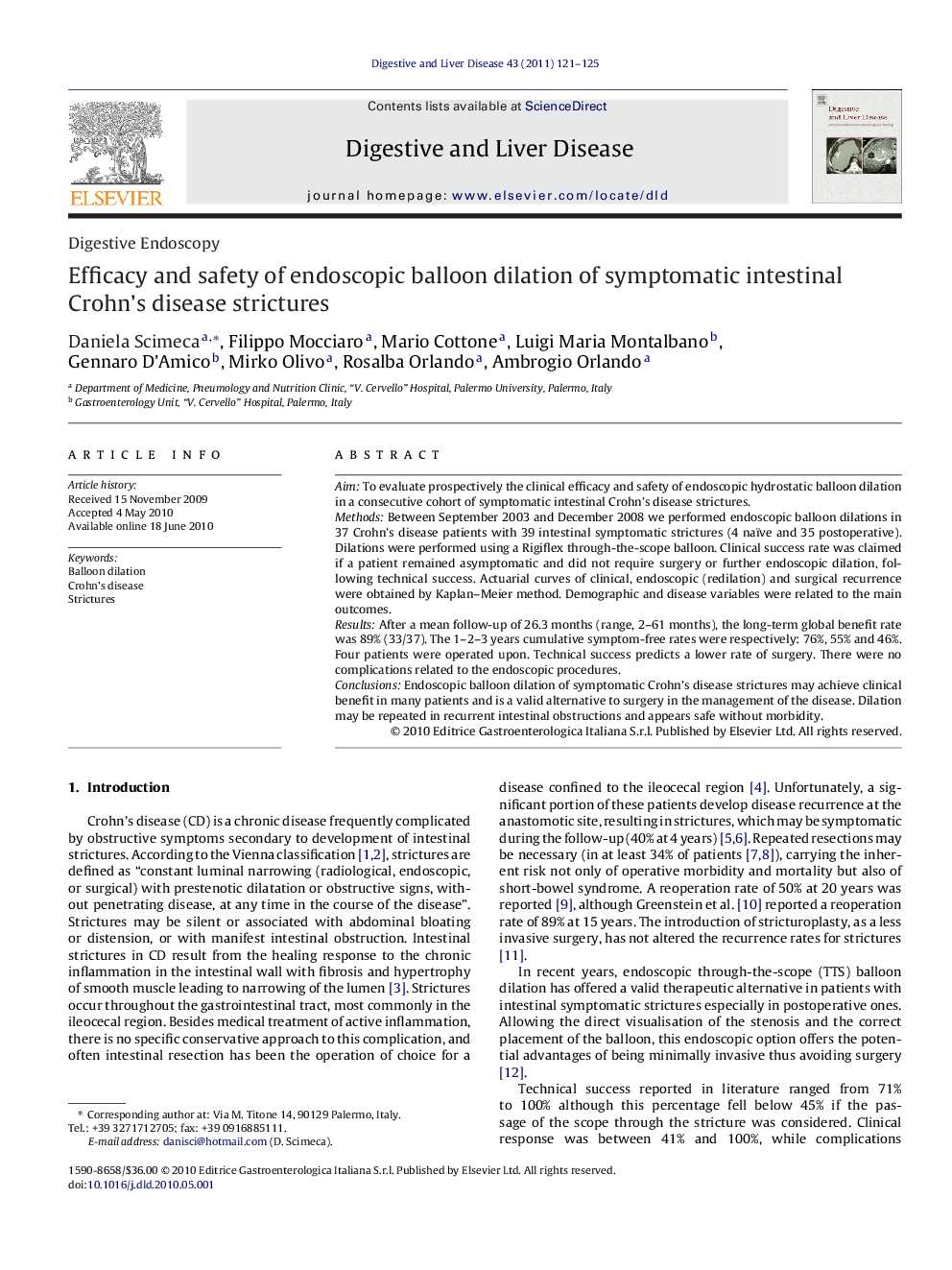| Article ID | Journal | Published Year | Pages | File Type |
|---|---|---|---|---|
| 3264723 | Digestive and Liver Disease | 2011 | 5 Pages |
AimTo evaluate prospectively the clinical efficacy and safety of endoscopic hydrostatic balloon dilation in a consecutive cohort of symptomatic intestinal Crohn's disease strictures.MethodsBetween September 2003 and December 2008 we performed endoscopic balloon dilations in 37 Crohn's disease patients with 39 intestinal symptomatic strictures (4 naïve and 35 postoperative). Dilations were performed using a Rigiflex through-the-scope balloon. Clinical success rate was claimed if a patient remained asymptomatic and did not require surgery or further endoscopic dilation, following technical success. Actuarial curves of clinical, endoscopic (redilation) and surgical recurrence were obtained by Kaplan–Meier method. Demographic and disease variables were related to the main outcomes.ResultsAfter a mean follow-up of 26.3 months (range, 2–61 months), the long-term global benefit rate was 89% (33/37). The 1–2–3 years cumulative symptom-free rates were respectively: 76%, 55% and 46%. Four patients were operated upon. Technical success predicts a lower rate of surgery. There were no complications related to the endoscopic procedures.ConclusionsEndoscopic balloon dilation of symptomatic Crohn's disease strictures may achieve clinical benefit in many patients and is a valid alternative to surgery in the management of the disease. Dilation may be repeated in recurrent intestinal obstructions and appears safe without morbidity.
